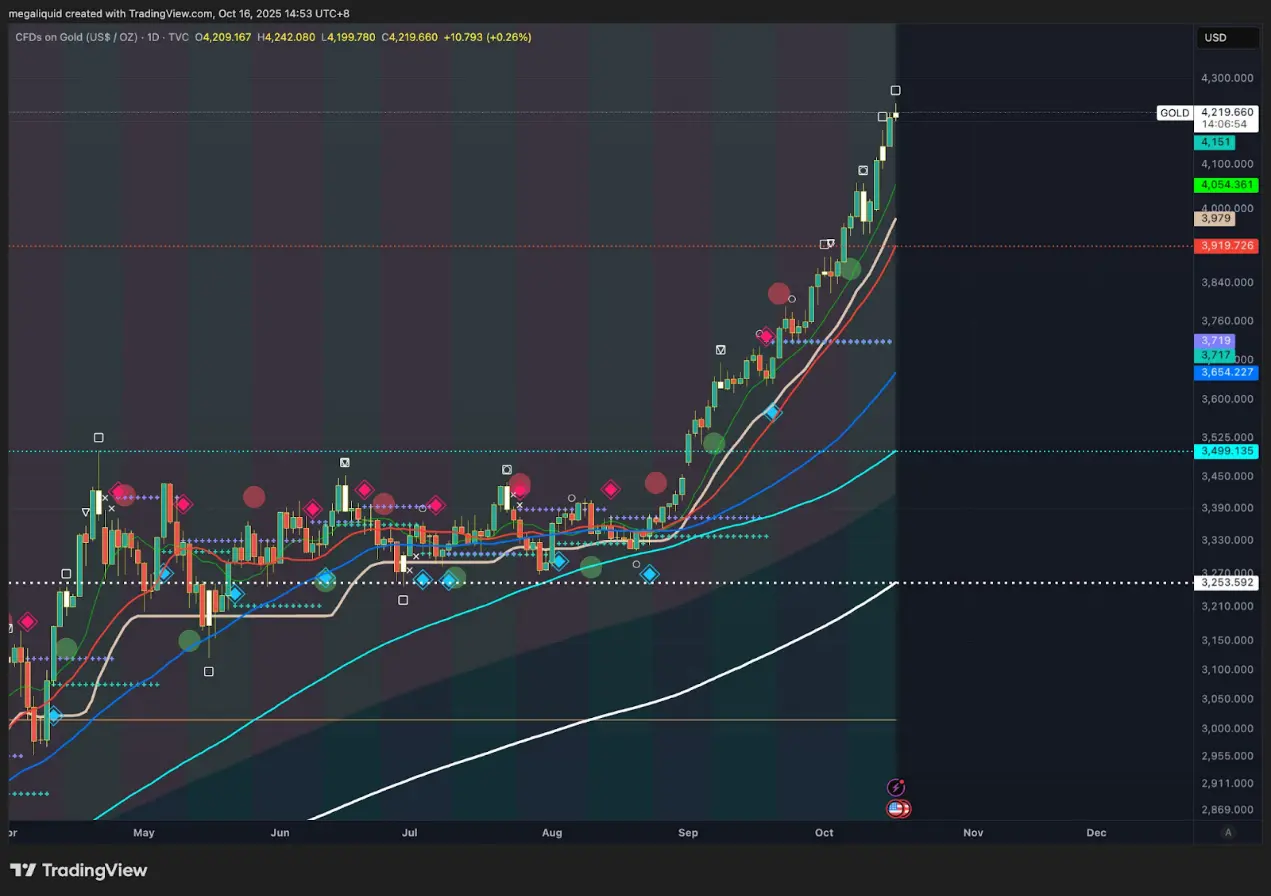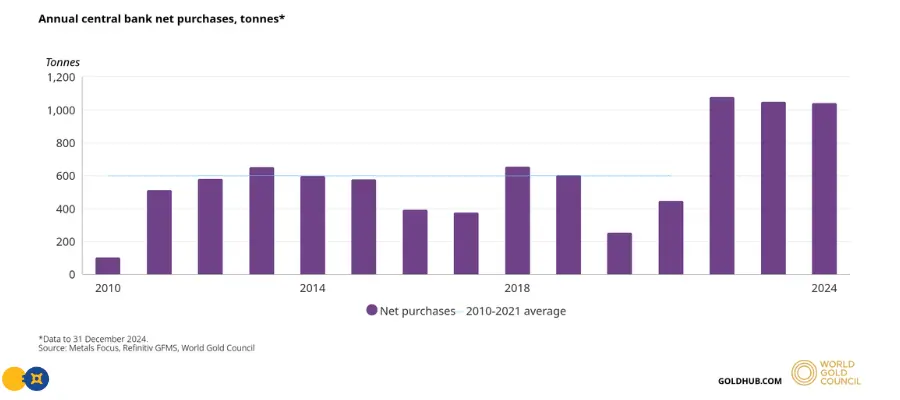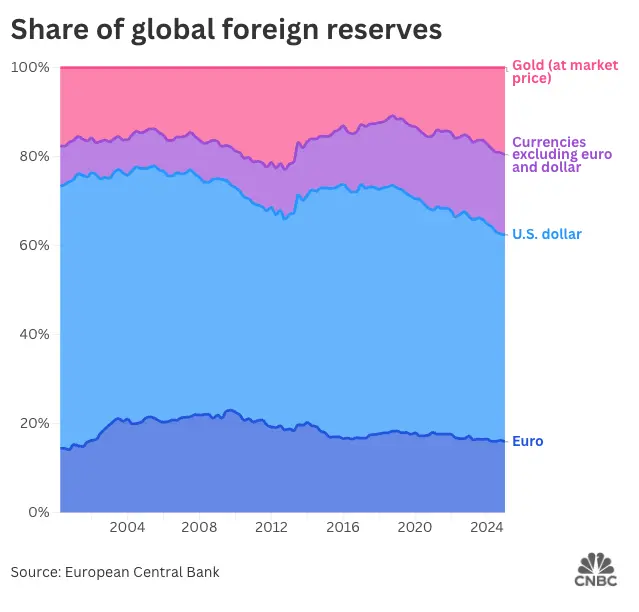Author: Fishmarketacad, Crypto KOL
Compiled by: Felix, PANews
On October 17, market data showed that the spot gold price strongly broke through the $4300/ounce mark, reaching a record high of $4378 per ounce at one point. Meanwhile, tokenized gold PAXG surged over 8% this morning. Discussions about gold on crypto Twitter have heated up, with crypto KOL @FishMarketAcad posting on X platform analyzing the current rise in gold and the decline in Bitcoin, believing that gold still has room to rise and is expected to break through $5000 in the future. Here are the details.
PANews Note: This article is not financial advice and only represents the author's personal views.
Why is only gold rising?
Since the unlimited quantitative easing and devaluation of fiat currencies in 2020, I have been paying attention to precious metals as a way to preserve value that is unrelated to the market.
Gold has broken through $4300, rising 25% in less than two months. Let's explore the reasons for this rise.

1. De-dollarization / Central banks competing to buy
Central banks around the world, especially the Chinese government, have been buying gold frantically. I believe this year will mark the fourth consecutive year of purchasing over 1000 tons of gold, and surveys show that the Chinese government plans to continue buying.

Why? The U.S. national debt is expected to reach $37.5 trillion this year, with interest alone exceeding $1 trillion (despite tax revenues of about $4 to $5 trillion). There are only two ways to deal with such massive debt: default or devaluation, and the U.S. never has to default because it can print more money, thereby devaluing the debt.
2. Stablecoins as a tool for socializing debt
The U.S. devalues its debt through monetary inflation, essentially printing more money to lower the value of the dollar, thus shrinking the actual value of its debt. You should already know this, as it has been happening for decades.
The new situation is that if the U.S. transfers its debt into cryptocurrencies like stablecoins, it could be interesting because stablecoins are more accessible to the world.
Stablecoins are increasingly backed by loans. Dollar-pegged stablecoins like USDT and USDC are now primarily backed by U.S. Treasury bonds. What was originally a pure 1:1 tool has gradually transformed into over 90% backed by U.S. Treasury bonds.
So now, whenever people from other countries hold stablecoins, they are indirectly purchasing U.S. debt. This globalizes America's "inflation tax." The higher the global adoption rate of U.S. stablecoins (which will reach trillions of dollars), the more the U.S. can export debt to the world and share its "losses" with the world (not just limited to the U.S.).
If this is indeed part of the plan, then it goes back to the previously mentioned reasons for the demand for de-dollarization and why gold is a relatively safe alternative for preserving value.
3. Physical squeeze
Another point is that this rise in gold is not merely driven by paper/derivatives. If you understand the phenomenon of a short squeeze that can occur when the open interest of options contracts exceeds the liquidity of a certain token, the situation here is similar.
In 2025, the open interest in gold futures on the New York Mercantile Exchange (COMEX) typically has hundreds of thousands of contracts (each representing 100 troy ounces), while the total amount of physical gold registered for delivery is only a small portion of that.
This means that at any given time, the demand for physical gold far exceeds the amount available for delivery. This is why the delivery time for gold has extended from a few days to several weeks, indicating actual physical demand (similar to spot demand), and this demand is unlikely to be from weak hands, thus forming a structural bottom.
4. Overall uncertainty
Gold has once again proven its status as a safe-haven asset during times of uncertainty. The current U.S.-China competition, trade war concerns, domestic turmoil in the U.S., Federal Reserve interest rate cuts, the U.S. economy being supported by AI infrastructure spending, and economic uncertainty have all led global investors to flee the dollar and invest in gold.
In my view, gold mainly declines when there is no need for a safe haven, which requires the following conditions, but is unlikely to occur in the short term:
- High employment rate: but the current outlook for the U.S. economy is poor
- Rotation of risk assets: current stocks are not cheap
- Political certainty: the U.S. needs to maintain friendly relations with China
- Rising interest rates mean rising capital costs: the current situation is exactly the opposite
Due to the unpredictable nature of Trump's words and actions, these factors could change rapidly (or at least the public perception of them), so caution is advised.
What does this mean for Bitcoin?
Bitcoin has fallen over 25% relative to gold this year. Although Bitcoin shares many similarities with gold, I still believe that Bitcoin does not yet meet the conditions to become "digital gold," but over time, Bitcoin is getting closer to gold (though it remains unclear how to address the quantum issue).
However, if you have tried buying gold, you will know that the physical buy-sell spread is very high, making gold an asset to hold after purchase, which is not appealing. Therefore, retail investors may choose to buy Bitcoin instead of gold, but the purchasing power of retail investors is relatively low compared to central banks.
Today, Bitcoin's correlation with U.S. politics is so high that it makes other central banks reluctant to de-dollarize by purchasing Bitcoin. I believe that U.S. miners currently account for about 38% of Bitcoin's hash power, and U.S. entities (exchange-traded funds, listed companies, trusts, and the government) control about 15% of the total Bitcoin supply, and this proportion may continue to grow.
So… I am not sure how Bitcoin will perform relative to gold, but in the short term (until this year), it will continue to exert pressure on gold.
What am I doing?
Long Bitcoin: I believe de-dollarization is more beneficial for Bitcoin than for other altcoins. Moreover, after the recent "1011" crash, it is clear that Bitcoin is the only asset with real order book liquidity and buying interest, and Bitcoin's dominance seems to be on the rise. If I see altcoins performing well, I may end this trade, but usually after Bitcoin sets a new all-time high, which should increase Bitcoin's dominance.
Long gold: Basically, this means buying paper gold, selling put options, or buying call options. However, the saying "Not your keys, not your coins" applies here as well; you might just be holding a piece of worthless paper, but I still somewhat recognize this.

Conclusion
Given the structural changes mentioned above, gold remains a good buying choice, but I would not be surprised if there is a 20% - 30% pullback. If such a situation occurs in the short term, it could be a good opportunity for long-term buying, provided that the uncertainties mentioned above are not resolved.
Additionally, gold is about to reach a resistance level relative to the S&P 500, and its market capitalization is about to hit $30 trillion. These two factors could indicate a local top, so I recommend waiting and not blindly following the trend.
Finally, here is another way I view gold; I believe gold still has room to rise:
- If the U.S. economy or global situation is unstable, gold prices will rise;
- If the U.S. economy or global situation is set to become more unstable, gold prices will rise;
- If the U.S. economy or global situation is set to become more stable, gold prices will fall.
Related reading: Gold "Super Bull" Report, Why Gold is Expected to Reach $8900 by the End of 2030?
免责声明:本文章仅代表作者个人观点,不代表本平台的立场和观点。本文章仅供信息分享,不构成对任何人的任何投资建议。用户与作者之间的任何争议,与本平台无关。如网页中刊载的文章或图片涉及侵权,请提供相关的权利证明和身份证明发送邮件到support@aicoin.com,本平台相关工作人员将会进行核查。



